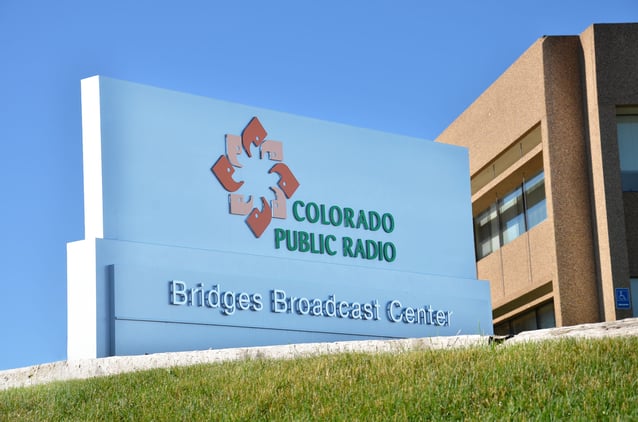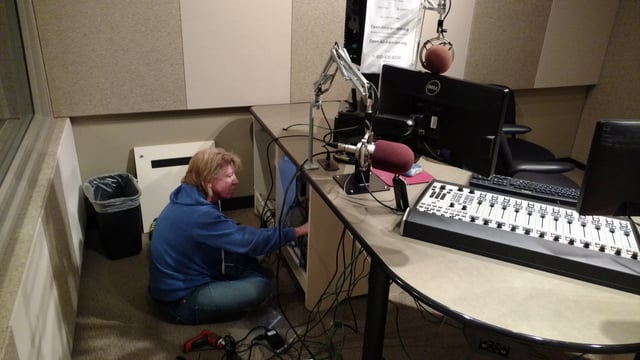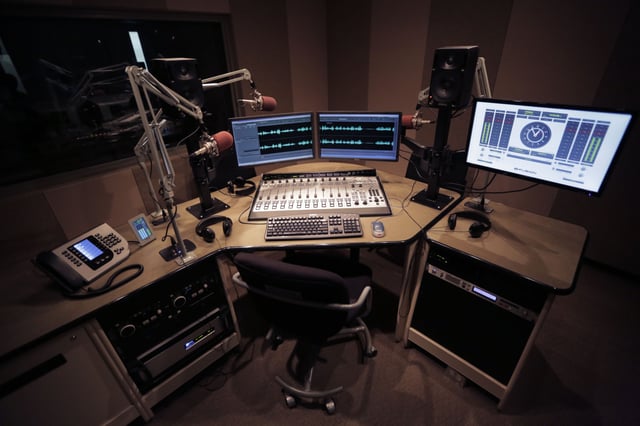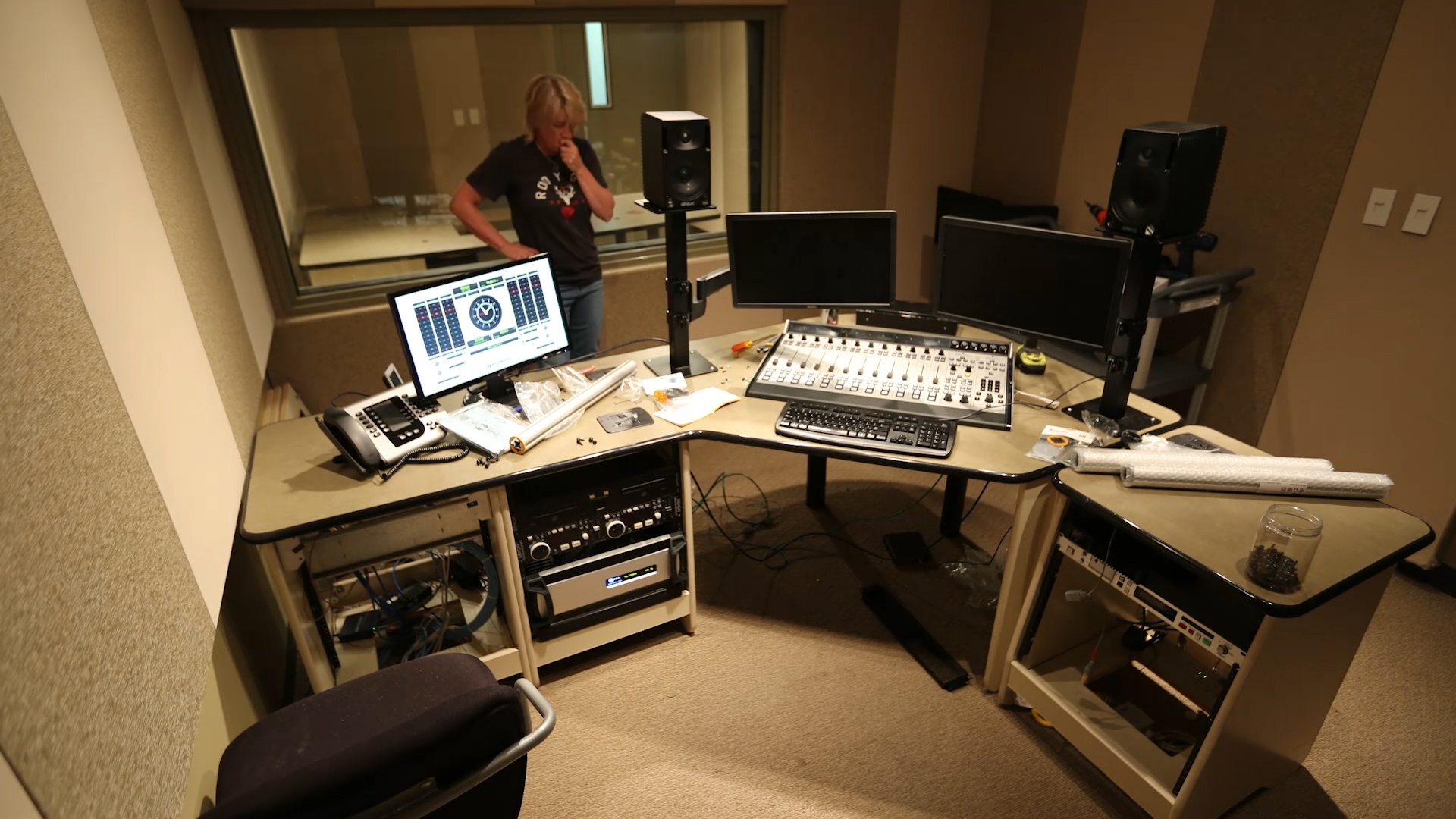[Case Study] Colorado Public Radio Makes AoIP Look Easy (And It Is!) | Telos Alliance
By The Telos Alliance Team on Feb 28, 2018 10:30:49 AM
[Case Study] Colorado Public Radio Makes AoIP Look Easy (And It Is!)
When it became clear that the audio routing system at Colorado Public Radio (CPR) network was failing repeatedly and reaching its end of life, CPR revived its air waves with Audio over IP from Axia. CPR began the conversation about switching to an AoIP infrastructure in its CPR Bridges Broadcast Center located at the Denver Tech Center in Centennial, Colorado, in August of 2015. The Colorado Public Radio family includes three separate services: CPR News, CPR Classical, and CPRs Open Air, an independent music format. According to CPR, its network reaches more than 470,000 listeners via 14 stations and 20 translators, with five studio sites across the state.
Powering the tech center was an old TDM system. “When I started working at CPR in August of 2015, the system was already starting to fail, but we were trying to limp it along for another five years,” says broadcast engineer Judy Bandstra. “We finally got to a point where we could see that this old technology was just not in the cards for the future, here or anywhere. It's pretty obvious that the industry's going to AoIP. Even for TV. That's really the future of broadcast.”
 |
| Colorado Public Radio Bridges Broadcast Center |
Judy has integrated numerous TDM systems, so she’s familiar with its pitfalls: “It's very labor-intensive, slow and expensive pulling all the copper required for that type of system, and it takes a lot of man power. For Audio over IP, running the CAT6 with RJ45s…there's one kind of connector on everything, and that’s nice…really nice. The CAT6 cable is also a lot cheaper.”
“We finally got to a point where we could see that this old technology was just not in the cards for the future, here or anywhere. It's pretty obvious that the industry's going to AoIP. Even for TV. That's really the future of broadcast.”—Judy Banstra, Broadcast Engineer, Colorado Public Radio
TDM systems have one single point of failure, which was the nail in the coffin for the CPR’s old system. “It had failed one too many times, causing everything to go down completely,” says Judy. “With the integrity of the network on the line, we had to replace not only the router, but the entire audio chain.”
 |
| CPR Engineer Judy Bandstra connects a new Axia Fusion console to a PowerStation console engine. |
With an Audio over IP system, the decentralization of the network as a major bonus. “An AoIP system like Axia decentralizes everything, versus a TDM system with one massive router that everything has to go through. With Axia, the equipment is in the studios, there are Axia xNode audio interfaces at different convenient places. You are no longer tied to putting everything in the same location. This also means there is not one single point of failure making it very reliable. There are tons of advantages to an AoIP system like this.”
 |
| One of eight on-air studios at CPR, featuring the Axia Fusion console and Telos Vset phone. |
Vice President of Engineering Dean Phannenstiel chose Axia to transition the CPR studios to AoIP. He not only liked the Axia Fusion AoIP console’s tech specs, but their immaculate look and build quality. A 16-fader Fusion console was to be installed in the Denver Tech Center’s eight on-air studios and one live performance studio. The center also includes five voice-tracking sound booths and serves as the hub of its satellite and STL operations. Phannenstiel selected the Cisco 4510 switch with fully redundant processor boards, switch blades, power supplies and its own UPS. All studios tie back to the switch through redundant Cat6 lines.
 |
| CPR host Ryan Warner's broadcasts run without a hitch thanks to AoIP and VoIP from Axia Fusion and Telos VX. |
While switching to AoIP seemed simple, CPR was concerned about compatibility between the new and existing equipment, and whether the potential lack thereof would result in any studio being down for any period of time. The flexibility and seamlessness to transform a facility or cluster to Axia AoIP one studio at a time, however, proved to be a huge benefit for CPR. The team was able to run the antiquated TDM system in parallel with the Axia AoIP system as they began converting one studio at a time.
Judy created CAD drawings so that the facility would know what was in place to help with the transition. “We knew what we could add in and what had to stay in place during the transition so we could run the two systems simultaneously, and then it was like a gradual cutover. With the xNodes, we could add a few in at a time here or there, and we could run the nodes through the old system for a little while if we needed to. This made it really flexible as far as the transition goes. One by one, everything was converted to the new system. So it went really smoothly and we were never off air, which was extremely important to us.”
 |
| Judy puts the final touches in a new Axia-powered AoIP studio. |
There were also concerns about latency in switching and the operational impact that might create. But so far, so good. Judy and the current team at CPR haven’t noticed any latency issues. “There's been a lot of changes made in AoIP to make it better over the years. So I don't think it's much of a problem anymore. So far it's proven to be really good,” she comments.
Since the installation, Colorado Public radio has discovered the virtual channels on the Fusion consoles. “We use the virtual channels for a lot of things that we didn't envision. There have been a lot of breakthrough moments like ‘Oh, I didn't know we could do this, but we can!’ and that has been really exciting,” says Judy.
 |
| In place of older phone hybrids is the Telos VX engine, connecting two-line Vset phones in each studio. |
Since the initial Fusion upgrade went off without a hitch, CPR has also upgraded its voice tracking booths, which are used to produce on-air content but used old analog mixers that aren’t connected to the main network. Axia QOR.16 and QOR.32 engines, along with Axia iQ and DESQ AoIP consoles are now in use throughout, with all of the voice booths on the new Livewire network through the Cisco switch.
 |
| CPR's voice tracking booth, featuring an Axia DESQ console, with a tiny footprint that easily sits on a small desk but offers robust functionality. |
At the end, when all of the studios were fully converted to the Axia system, we decommissioned the old TDM router. Now that was a great feeling!”—Judy Banstra, Broadcast Engineer, Colorado Public Radio
Now, CPR has a more flexible, powerful, easy-to-use system than ever before thanks to the power of Axia AoIP. It has been running on a purely AoIP infrastructure with consoles, audio interfaces, and routing control from Axia for several months now, with everything communicating via Axia’s Livewire+ AES67 protocol. “It was so super easy to install . . . Axia has been rock solid,” she says. “At the end, when all of the studios were fully converted to the Axia system, we decommissioned the old TDM router. Now that was a great feeling!”
Further Reading
To learn more about of Audio over IP, download our eBook and check out these blog posts:
Into the Valley of AoIP at VPR
Minnesota Public Radio Sticks with Axia for Complete Facility Upgrade
Spokane Public Radio Sets AoIP on Fire
Telos Alliance has led the audio industry’s innovation in Broadcast Audio, Digital Mixing & Mastering, Audio Processors & Compression, Broadcast Mixing Consoles, Audio Interfaces, AoIP & VoIP for over three decades. The Telos Alliance family of products include Telos® Systems, Omnia® Audio, Axia® Audio, Linear Acoustic®, 25-Seven® Systems, Minnetonka™ Audio and Jünger Audio. Covering all ranges of Audio Applications for Radio & Television from Telos Infinity IP Intercom Systems, Jünger Audio AIXpressor Audio Processor, Omnia 11 Radio Processors, Axia Networked Quasar Broadcast Mixing Consoles and Linear Acoustic AMS Audio Quality Loudness Monitoring and 25-Seven TVC-15 Watermark Analyzer & Monitor. Telos Alliance offers audio solutions for any and every Radio, Television, Live Events, Podcast & Live Streaming Studio With Telos Alliance “Broadcast Without Limits.”
Recent Posts
Subscribe
If you love broadcast audio, you'll love Telos Alliance's newsletter. Get it delivered to your inbox by subscribing below!